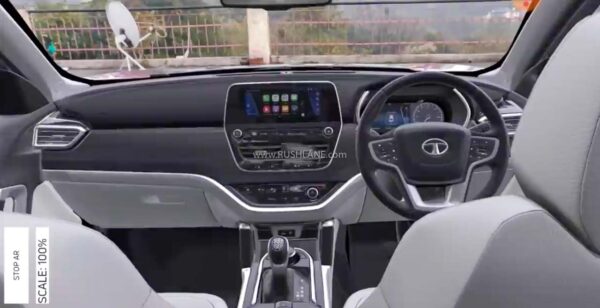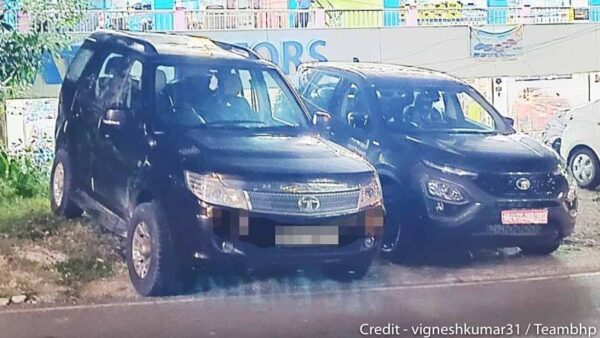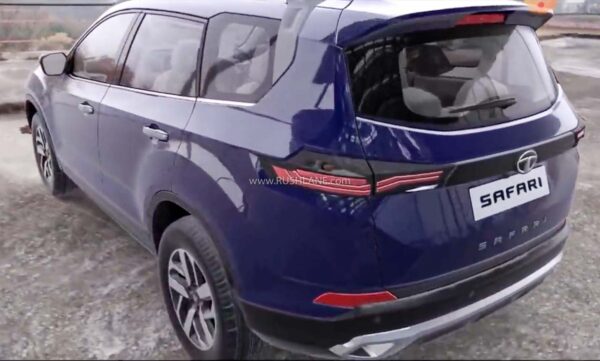
2021 Safari is all set to make its debut on January 26 and will rival the likes of Mahindra XUV500 and MG Hector Plus
Tata Motors took almost everyone by surprise when they announced a couple of weeks ago that its upcoming seven-seater SUV will be named Safari instead of Gravitas. The decision to revive an iconic moniker has received mixed reactions so far. The company has revealed that it was a well thought out decision to rename it and was always meant to carry the name of Safari.
With announcement of this development, it drew an instant comparison to the original Safari which sadly got discontinued last year due to adoption of stricter emission norms. Here we discuss five key differences between the original Safari and the new 2021 Safari which is essentially a three-row derivative of Harrier.
Well Furnished Interiors
When Safari was first introduced way back in 1998 lack of technology and low prioritisation of a nice cabin was evident. In respect to that, Safari was fairly well-equipped with a nice feel. Over the years, despite numerous updates, the cabin started to look very outdated and felt sort of barebones. The new Safari is certainly a big step-up from the older model in this aspect.
It comes with well-crafted interiors with use of premium materials on dash, door panels and seat upholstery. The dual-tone theme also gives it a premium feel whereas its equipment is fully laced with modern features such as an 8.8-inch touchscreen infotainment system with Apple CarPlay, Android Auto and connected car technology, 7-inch digital instrument cluster, powered tailgate, electronic parking brake, climate control and much more.

New Engine: More Power, Less Torque
The older Safari in its last generation- Storme was powered by a 2.2-litre diesel mill which produced 156 PS of power and 400 Nm of peak torque. Compared to this, the new Safari will be powered by a Fiat-sourced 2.0-litre Kryotec oil burner which pushes out 170 PS of power and 350 Nm of torque. This means 14 PS more power but 50 Nm less in torque.
The Safari brand, for the first time, will be offered with a 6-speed automatic transmission unit along with a 6-speed manual gearbox. Earlier Safari was only equipped with a 6-speed manual unit.
No 4×4 Drivetrain
The mixed reactions are mainly due to unavailability of a 4WD setup. Yes, Tata Motors has confirmed that like its smaller sibling Harrier, the new Safari will be an FWD SUV with now 4×4 drivetrain or an all-wheel-drive setup like the old Safari. The older model was more than a decent off-roader but the new Safari will be best suited for tarmac and mild off-roading only.

Tata Motors has taken this conscious decision keeping in mind the dwindling demand for 4×4 vehicles. However, it has pointed out that it has not ruled out the option provided there is enough demand for a 4WD Safari.
Ladder on Frame Vs Monocoque Chassis
Old Safari was based on a conventional X2 body on frame chassis which also underpinned the likes of Aria and Hexa. While it was built to survive an apocalypse, its highway driving dynamics did not have much flaunt about. Tata Motors has tried to address this issue by underpinning the new Safari with a monocoque platform named OMEGARC which has been derived from Land Rover D8 platform. This architecture provides for a more planted ride on tarmac.

Multiple Seating Configurations
Tata Motors will be offering two seating configurations with the new Safari- a 6-seater and a 7-seater. The former will be provided with two captain seats in the middle row while the latter will have a bench seat in the middle row. The third-row seat could fit people and more importantly, will be forward-facing, unlike the old Safari which had side-facing jump seats at rear.

